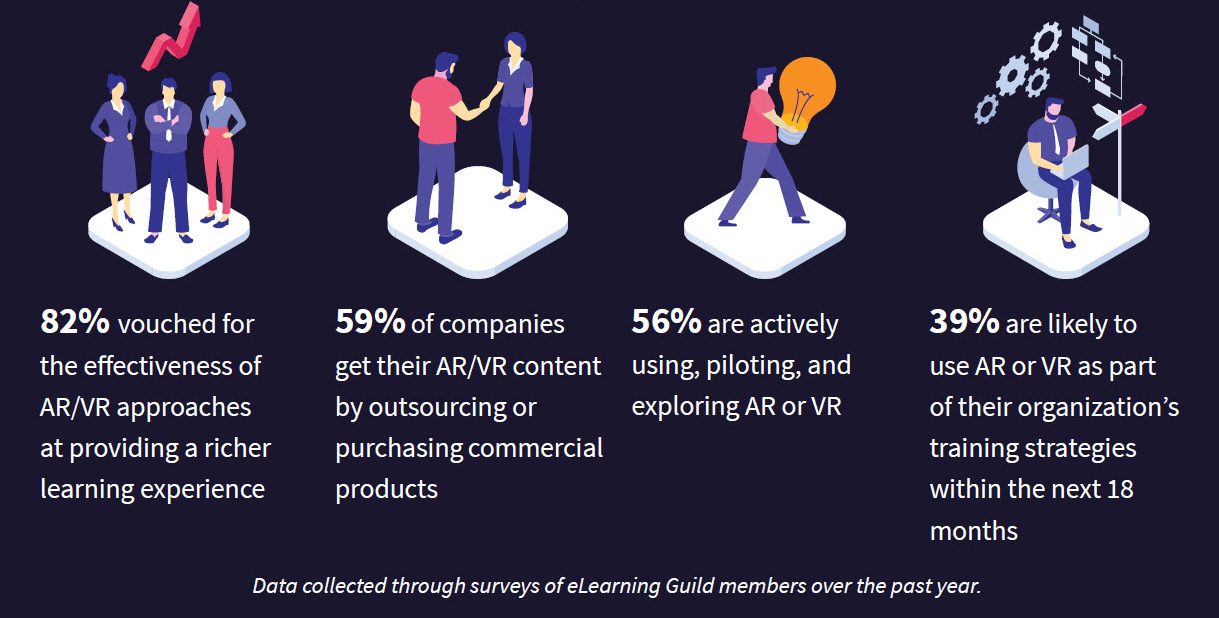David Kelly’s Curated L&D Content for the Week of 4/8/19
 This week’s curated content includes links exploring the following:
This week’s curated content includes links exploring the following:
- understanding the elements of good design via deconstruction
- A simple way to help convey what L&D looks like beyond just training
- A look at the core components of voice interfaces
- critical questions organizations must ask about artificial intelligence
- how Marketing looks at informational versus transactional content
- Accessibility from the perspective of a disabled gamer
Deconstructing Simple Visual Design for E-Learning by Tom Kuhlmann
Finding the right look for your elearning can be a challenge. It often requires lots of tweaks and iterations before you get things feeling right. This post is a great narration of just such a process, as it takes an idea and iterates on the design, exploring each version’s changes and the logic behind. You get to see the final design take shape forged by the decisions made during each round. The post ends with a list of tips to apply to your own design iterations.
Build the bridge to self-learning: Help individuals help themselves by Jane Hart
Many in L&D work in a training environment. It’s what the culture expects, it’s what the L&D team is judged upon, and it’s the foundation upon which success is often judged. Even if you want to extend your influence beyond just formal training initiatives, it can seem overwhelming to think about how to support such a shift. This post looks at that problem and presents suggestions on how to start moving in that direction. What I like about this post is its simplicity; it provides a simple diagram using simple language to make a complex shift easily digestible. If you’ve been looking for a way to help yourself or your team better see the potential of looking beyond just “training”, this is a great post to start with.
Voice: Anatomy of The Invisible Interface by Krishnan Srinath
Interacting with technology via voice is slowing becoming mainstream. From our cars, to our phones, to dedicated devices like Alexa, there’s normalcy being built around voice commands. As L&D looks at voice-enabled technology, we first must understand the core elements of a voice command. This post puts the core elements of voice interfaces into simple language and context.
Is Your Organization Ready to Harness the Potential of AI?
Artificial intelligence is arguably going to change the future of work more than any other emerging technology. It won’t just shape the future of L&D; it will shape the future of the organizations L&D is a part of. It represents a fundamental change in the future of what work itself means, and it’s critical that L&D professionals understand its implications. This post explore some of the key questions that organizations must ask about AI. The questions serve as a good rimer for LD professionals curious about how artificial intelligence will impact the future of work.
Get to Your Audience’s Core: Know Their Content Intent by Daniel Hochuli
There are a number of parallels between the fields of Marketing and Training. This post explores two different types of Marketing content – informational and transactional – and what they mean to the buyer’s journey. These concepts can easily be adapted to your L&D practices by swapping “understanding” for informational and “doing” for transactional.
Sekiro: Accessibility in Games is about Far More than “Difficulty” by Cherry Thompson
Accessibility is something we hear a lot about in our industry (or at least should), but the narrative is often coming from those building with accessibility in mind. The accessibility narrative is often completely different when you hear it directly from the user who is having challenges. This post is a great example. It’s written by a gamer who is sharing her story of how she accomodates her disabilities when she plays, and how games can better be designed with accessibility in mind. It’s a great glimpse of accessibility from the user’s point of view.
Are You Ready for the Emergence of AR & VR Training?
Recent surveys collected by the eLearning Guild show a growing number of organizations actively exploring the applications of augmented reality and virtual reality in education and training. Here are just a few interesting takeaways from recent surveys.

Combine these sentiments with AR/VR industry surveys that show investments targeting enterprise training and education as one of the primary targets of AR/VR providers and it appears that AR/VR training is well-positioned for a breakthrough moment.
 This year’s Realities360 Conference and Expo supports this unique moment by bringing together the industry providers that are building training and education platforms, tools, and solutions so that leading organizations and professionals can get the guidance and support needed to build their AR/VR strategies and programs.
This year’s Realities360 Conference and Expo supports this unique moment by bringing together the industry providers that are building training and education platforms, tools, and solutions so that leading organizations and professionals can get the guidance and support needed to build their AR/VR strategies and programs.
If your organization is actively exploring, testing, or implementing AR or VR training and education, you need to be at Realities360 this June. Registration is now open, and many of the sessions you can expect are already online.
If you have any questions about this year’s event, feel free to shoot me an email.

Leave a Reply